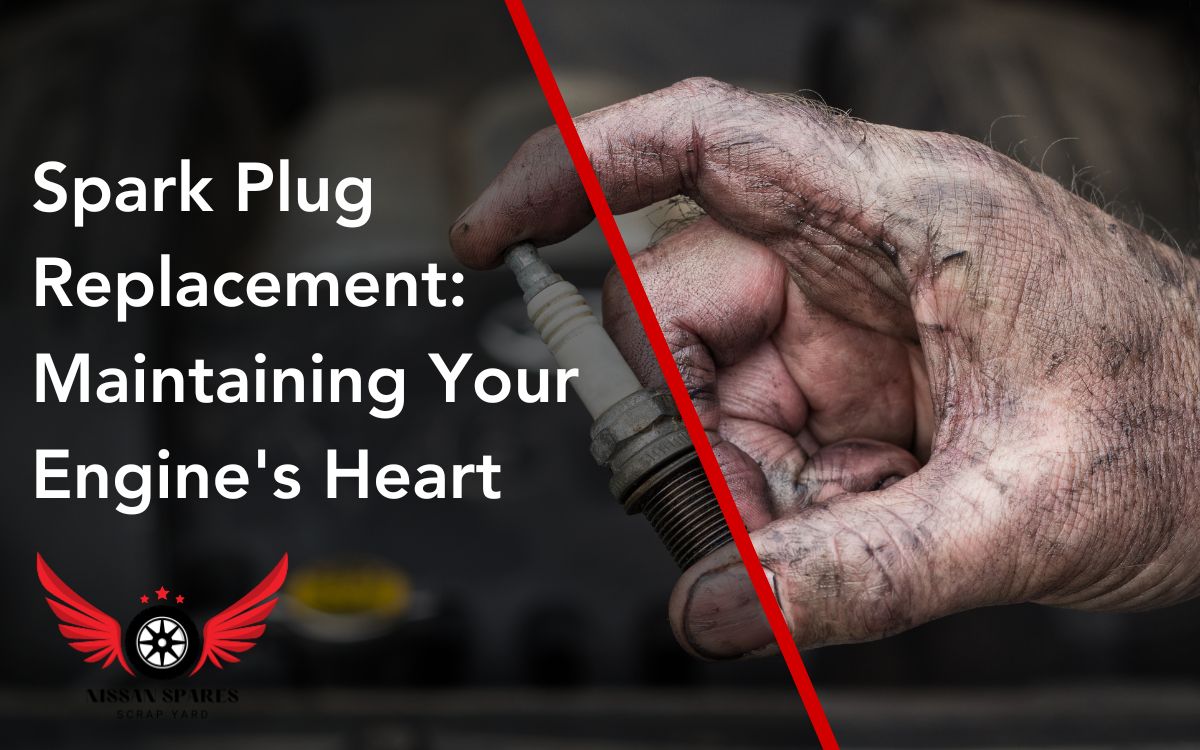Spark Plug Replacement Guide
Spark plugs are crucial components in your vehicle’s engine, playing a vital role in combustion and overall performance. Proper maintenance and timely replacement of spark plugs can significantly improve your car’s efficiency, power, and reliability. This comprehensive guide will walk you through the process of spark plug replacement, offering insights and tips for a successful DIY job.
Key Takeaways:
- Engine Performance: Spark plugs directly impact fuel efficiency and power output.
- Maintenance Schedule: Regular replacement prevents misfires and improves overall engine health.
- Proper Installation: Correct gapping and torquing are crucial for optimal performance.
Importance of Spark Plugs and Signs of Wear
Spark plugs are essential for initiating the combustion process in your engine. Over time, they can wear out, leading to various performance issues:
- Rough Idle: Engine runs unevenly when stationary.
- Misfires: Intermittent loss of power or stuttering during acceleration.
- Poor Fuel Economy: Noticeable decrease in miles per gallon.
- Difficulty Starting: Engine takes longer to turn over, especially in cold weather.
If you’re experiencing these symptoms, it might be time to check your spark plugs. Regular maintenance, including air filter changes, can also help prolong spark plug life.
Tools and Materials Needed
Before starting the replacement process, ensure you have the following tools and materials:
- Spark plug socket
- Ratchet and extension
- Torque wrench
- Gap gauge
- Anti-seize compound
- Dielectric grease
- New spark plugs (matching your vehicle specifications)
Step-by-Step Spark Plug Replacement Process
Follow these steps for a successful spark plug replacement:
1. Prepare the Vehicle
- Ensure the engine is cool to avoid burns.
- Disconnect the negative battery terminal for safety.
2. Locate and Access the Spark Plugs
- Refer to your vehicle’s manual to find the spark plug locations.
- Remove any engine covers or obstacles blocking access.
3. Remove the Old Spark Plugs
- Carefully disconnect the spark plug wires or ignition coils.
- Use the spark plug socket to remove each plug, turning counterclockwise.
4. Inspect and Gap the New Spark Plugs
- Check the new plugs against the old ones for proper fit.
- Use a gap gauge to ensure the electrode gap matches your vehicle’s specifications.
5. Install the New Spark Plugs
- Apply a small amount of anti-seize compound to the threads (if recommended by the manufacturer).
- Carefully thread the new plugs by hand to avoid cross-threading.
- Use a torque wrench to tighten to the specified torque.
6. Reconnect and Test
- Reattach the spark plug wires or ignition coils, applying dielectric grease to the connections.
- Reconnect the battery and start the engine to check for proper operation.
For more detailed information on ignition system maintenance, check our guide on ignition coil replacement.
Spark Plug Replacement Table
| Step | Key Points | Common Mistakes to Avoid |
|---|---|---|
| Preparation | Cool engine, disconnect battery | Working on a hot engine |
| Removal | Use correct socket size, turn counterclockwise | Forcing stuck plugs, damaging threads |
| Gapping | Match to vehicle specs, use proper tool | Incorrect gap, bending electrode |
| Installation | Thread by hand, use torque wrench | Cross-threading, over-tightening |
| Reconnection | Ensure proper wire/coil seating | Loose connections, missing dielectric grease |
Common Challenges and Troubleshooting
Even with careful preparation, you may encounter some challenges:
- Seized Spark Plugs: Apply penetrating oil and let sit before attempting removal.
- Cross-Threading: If you feel resistance when installing, back out and try again carefully.
- Ignition Coil Issues: If problems persist after replacement, consider checking the ignition coils.
For fuel system-related issues that may affect spark plug performance, our fuel injector replacement tutorial might be helpful.
Maintenance Tips and Best Practices
To ensure long-lasting performance from your spark plugs:
- Follow Recommended Intervals: Replace spark plugs according to your vehicle’s maintenance schedule.
- Use Quality Parts: Invest in high-quality spark plugs that match your vehicle’s specifications.
- Keep Engine Clean: Regular engine air intake cleaning can help reduce carbon buildup on spark plugs.
- Address Issues Promptly: If you notice signs of spark plug wear, don’t delay replacement.
Conclusion: The Benefits of Proper Spark Plug Maintenance
Regular spark plug replacement is a crucial aspect of vehicle maintenance that offers numerous benefits:
- Improved fuel efficiency
- Enhanced engine performance and power
- Reduced emissions
- Smoother engine operation
- Easier starting, especially in cold weather
By following this guide and maintaining your spark plugs, you can ensure your vehicle runs at its best, potentially saving money on fuel and preventing more serious engine issues down the road.
FAQ
How often should I replace my spark plugs?
Replacement intervals vary by vehicle and plug type. Generally, copper plugs need replacement every 30,000-50,000 km, while platinum or iridium plugs can last 60,000-100,000 km or more. Always consult your vehicle’s manual for specific recommendations.
Can I replace just one spark plug if it’s faulty?
While it’s possible to replace a single faulty plug, it’s generally recommended to replace all spark plugs at the same time to ensure consistent performance across all cylinders.
How do I know if my spark plugs need replacing?
Common signs include rough idle, misfires, decreased fuel efficiency, difficulty starting the engine, and a check engine light. A visual inspection can also reveal worn or fouled plugs.
Is it necessary to gap new spark plugs?
Many modern spark plugs come pre-gapped. However, it’s always a good idea to check the gap against your vehicle’s specifications and adjust if necessary.
Can the wrong spark plugs damage my engine?
Yes, using spark plugs with the wrong heat range or incorrect specifications can lead to poor performance, increased fuel consumption, and potentially serious engine damage over time.


